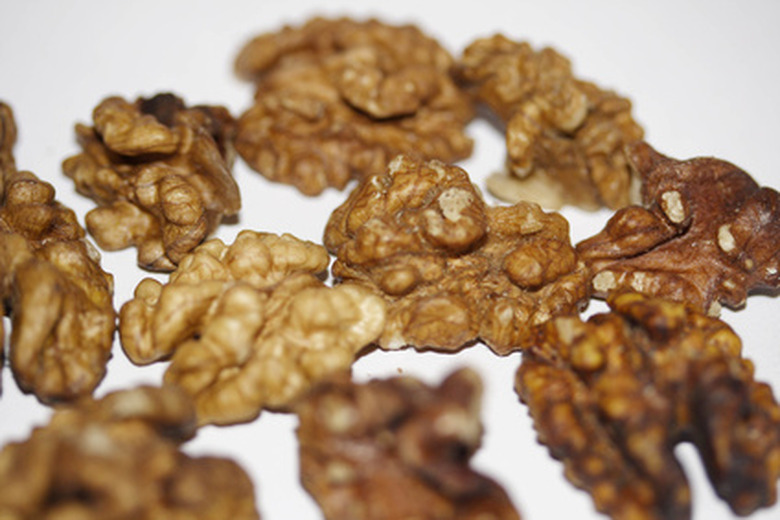When Do Black Walnuts Fall Off The Tree?
Black walnuts are used in ice cream, candy and commercial baking. The shells of the black walnut may be ground finely and used as an abrasive polish or added to well-drilling mud. A source of excellent lumber, the black walnut is one of the most popular trees for furniture-making.
Time Frame
Depending on the latitude at which the black walnut tree is located, the hard, round, green husks fall off the tree around September or October. To test for good nuts, place dehulled nutshells in a bucket of water; the ones that float contain bad nut meat.
Warning
Chemicals found in the leaves, roots, nut husks and trunk of the black walnut can impede the growth of fruits and vegetables growing nearby, such as tomatoes, blackberries, potatoes, grapes and alfalfa. The effects of this chemical remain, even after the tree is removed.
- Black walnuts are used in ice cream, candy and commercial baking.
- Chemicals found in the leaves, roots, nut husks and trunk of the black walnut can impede the growth of fruits and vegetables growing nearby, such as tomatoes, blackberries, potatoes, grapes and alfalfa.
Benefits
The black walnut tree provides fodder for wildlife who consume the rich nut meats. These animals include squirrels, woodpeckers and white-tailed deer.
Features
Black walnut lumber is valued for its properties as veneer for doors, cabinetry, wall paneling and tables. Gunstock blanks and novelty items are fashioned from black walnut. Wooden figurines are made from the burls, crotches and stumps of the black walnut tree.
Landscape With Black Walnut Trees
Select the variety of black walnut you want to plant or note the variety that you already have in your yard. It grows up to 80 to 100 feet tall. If you have yet to plant the tree, put a stake in the ground where you want the tree to be located and attach a 50-foot piece of cord to the stake. Then walk in a circle around the stake. Review lists of juglone-intolerant plants that grow in your climate zone and avoid planting them within the juglone-contaminated area. Fruit plantings are also limited. Apples, grapes and most berries do poorly close to black walnut trees. Many perennial shrubs can be grown near a black walnut tree, including arborvitae, clematis, daphne, forsythia, hawthorn, spicebush and rose-of-sharon. Use planters, window boxes and other containers for intolerant plants.
- The black walnut tree provides fodder for wildlife who consume the rich nut meats.
- Apples, grapes and most berries do poorly close to black walnut trees.
